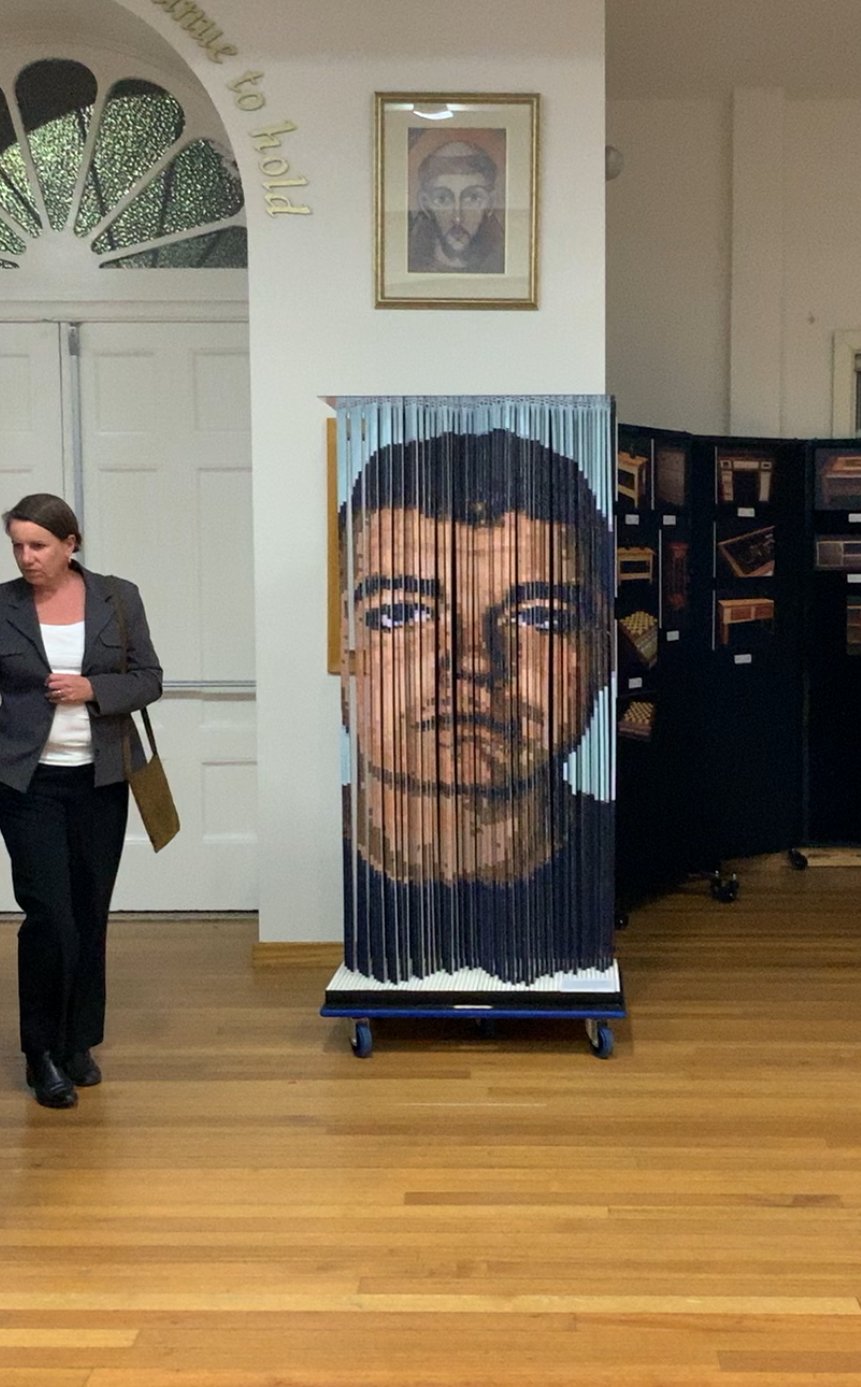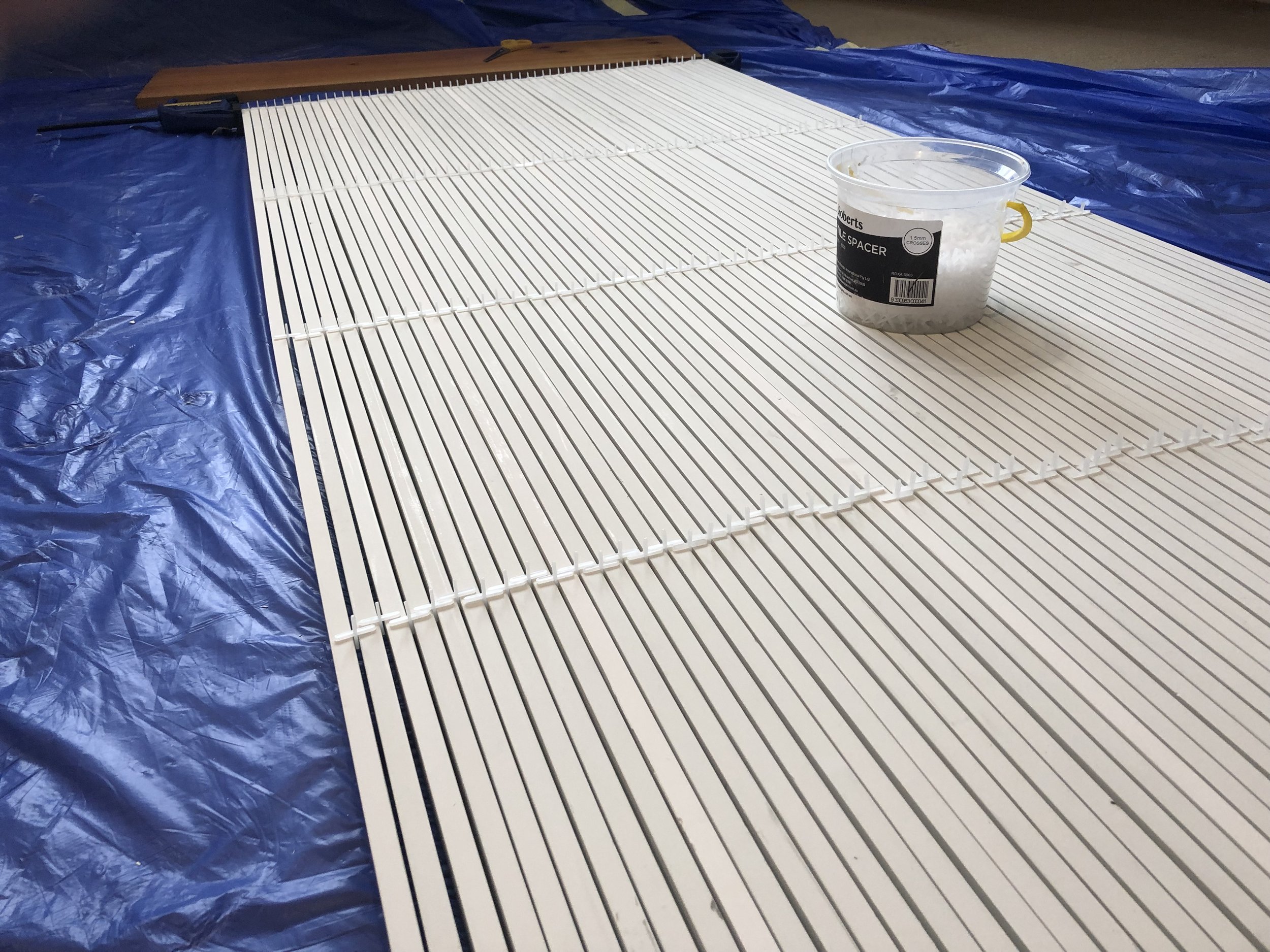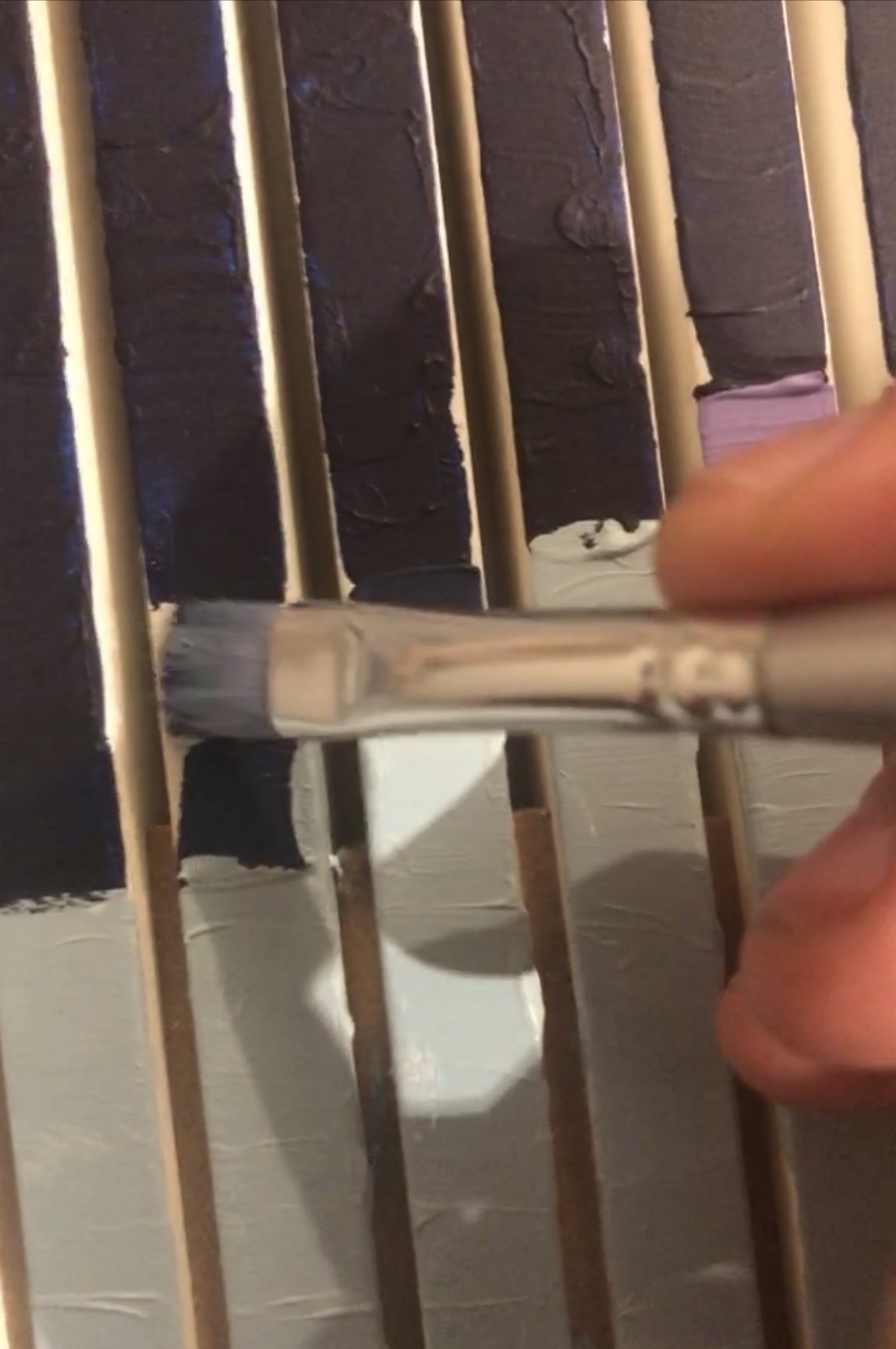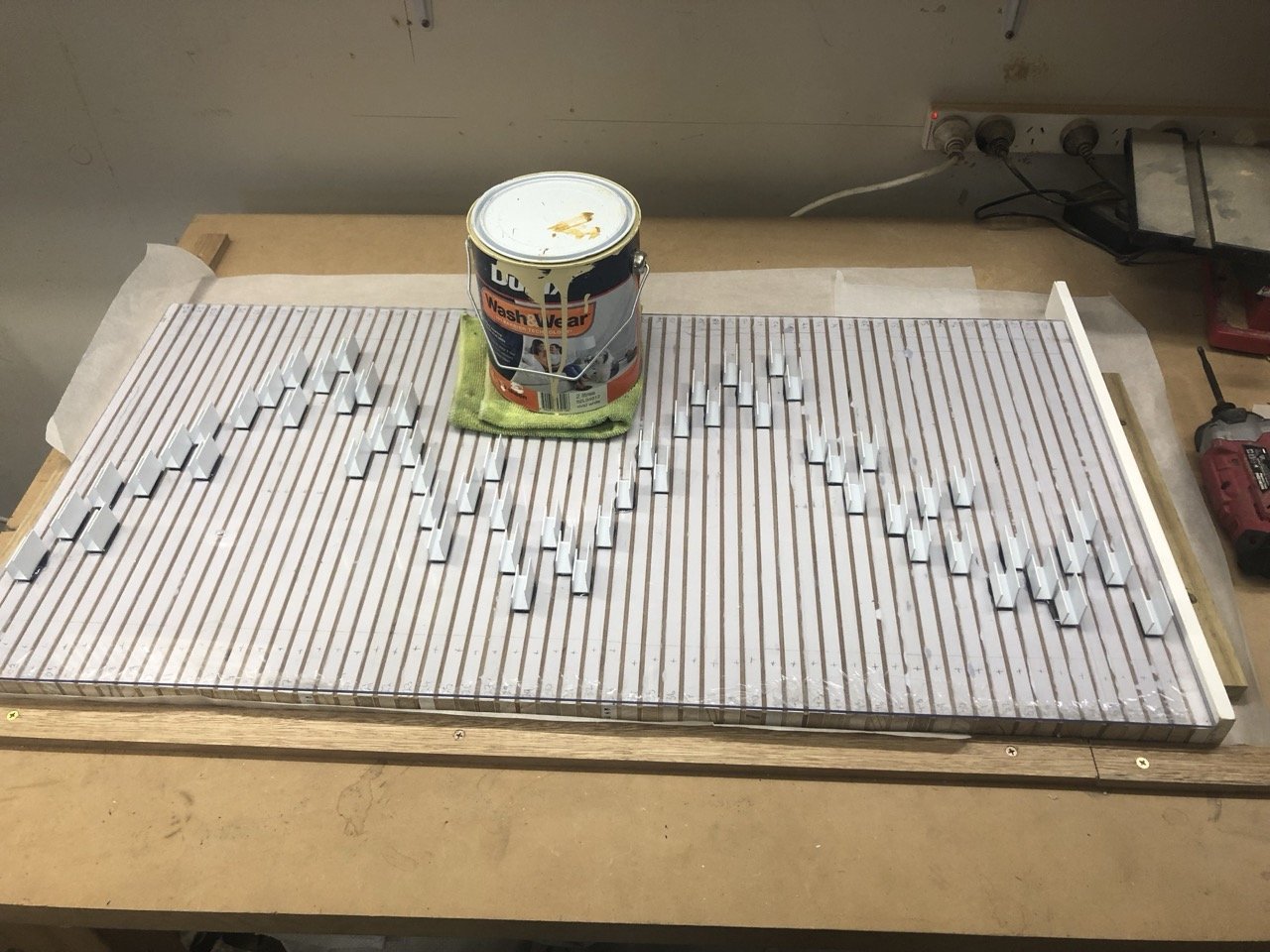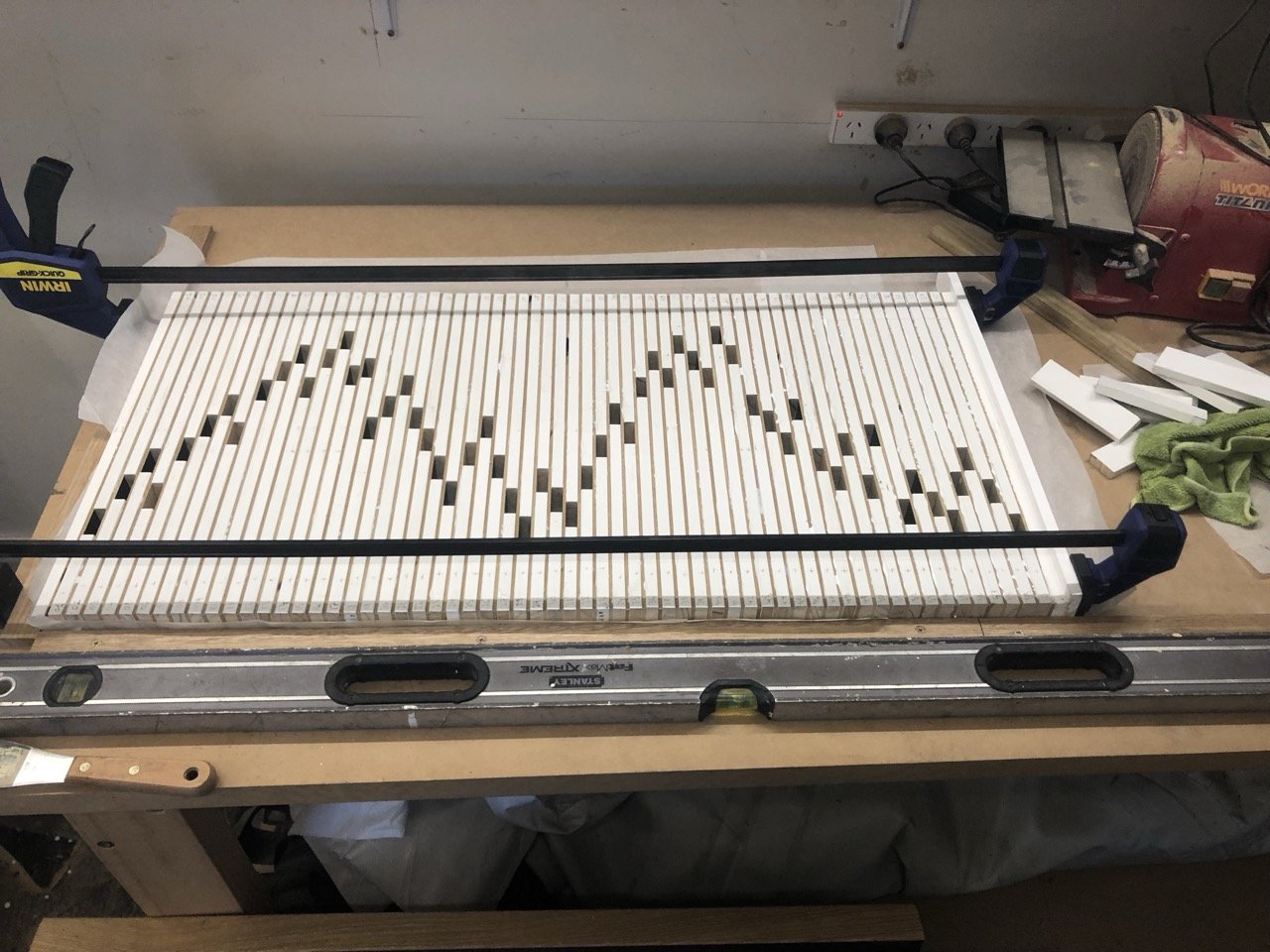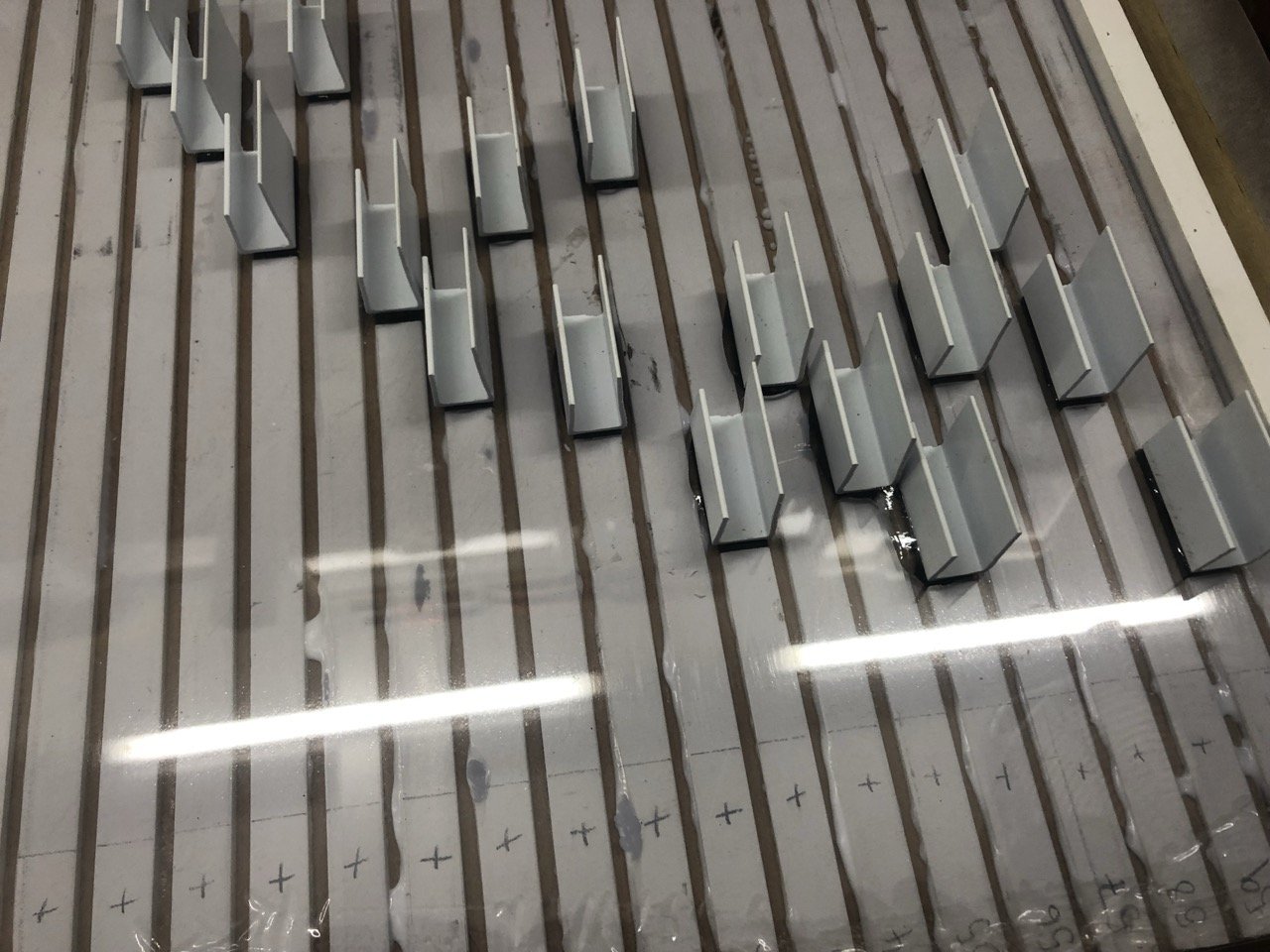‘Sonder’
Year: 2019
Project Brief
“Sonder” captures the profound revelation that every person we encounter leads a life as intricate and multi-dimensional as our own, a notion coined by John Koenig in The Dictionary of Obscure Sorrows. The artwork is designed not only to illustrate this depth but also to make it felt, as viewers must actively search for the right perspective to fully appreciate its meaning—mirroring the real-life challenge of perceiving others' inner complexities. This discovery is intentional, requiring the viewer to engage deeply, reflecting how understanding others often demands time and intention.
Through a construction of wooden slats, each one painted and set at a different depth, Sonder creates a portrait that only comes into focus when observed from specific angles. These shifting slats represent the layered experiences, memories, and identities that each person carries, largely invisible at a surface glance. The spatial arrangement symbolizes the distance between people’s outward appearances and their inner lives, with each slat contributing an essential, albeit fragmented, part to the full picture of a person.
Further, by placing two distinct faces on opposing sides of the slats, the artwork reinforces the shared humanity that exists beyond our differences. These dual portraits—interdependent, inseparable—express that even the most divergent lives are intrinsically linked. The dual faces represent the mutual empathy required to see beyond one’s own perspective and recognize the depth in others. Sonder, then, is a visual and experiential meditation on human connection, urging us to look beyond the immediate and familiar to grasp the richness in others.
Process
The initial phase of creating Sonder began with photographing myself and my dad, capturing two unique faces to anchor the piece in personal, interconnected narratives. These photos were then imported into Photoshop, where I pixelated each image to reduce them to simplified forms, stripping back detail to create an abstract representation. By editing the images to only 27 colors, I aimed to distill each portrait into essential tones that could be reconstructed with precision. Overlaying a numbered grid on each image allowed for meticulous mapping, ensuring every pixel could be translated accurately into physical form. This grid-based system helped isolate each of the 27 colors, establishing a defined palette that would guide the later arrangement of painted slats.
In the second phase of creating Sonder, I focused on constructing the physical structure by cutting 64 individual wooden slats to size and numbering each one to ensure their precise arrangement. Once arranged, I drew a 1cm by 1cm grid over the surface of the slats, mirroring the digital grid used in Photoshop. This grid became a roadmap, where each square was carefully labeled with its corresponding color from the 27-shade palette established in the first phase. The process required a methodical approach to match each color with its correct grid position, creating a complex mosaic of tones that, when viewed from specific angles, would blend together into two distinct faces. Finally, I meticulously painted each square, building a multi-dimensional portrait that would shift and transform as the viewer’s perspective changed, echoing the theme of layered identities and interconnectedness.
The final stage of Sonder involved designing and assembling a support structure to secure each slat at varying depths, reinforcing the intricate arrangement necessary to bring the piece to life. The base was crafted from the offcuts of the original slats, giving a cohesive look to the piece and making use of materials from earlier in the project. Each base piece was cut and positioned with precise gaps matching the depth of each slat, allowing them to fit snugly into the divots for a stable hold. To counteract any potential warping and ensure that each slat stayed perfectly aligned, I created a ceiling from a plexiglass panel that matched the base in size. This clear panel, outfitted with plastic grips, held each slat in place from above, preserving the arrangement while allowing the structure to remain visually unobstructed. The combined base and plexiglass ceiling system not only ensured structural integrity but also completed the artwork’s interactive viewing experience, anchoring each slat securely and inviting viewers to engage with the complex layers from every angle.
Outcome
The final outcome of Sonder invites viewers to explore the interplay of perspective and complexity, as two distinct portraits emerge through shifting angles. These videos capture the immersive experience of discovering hidden connections within layered identities, reinforcing the shared humanity we all carry.



